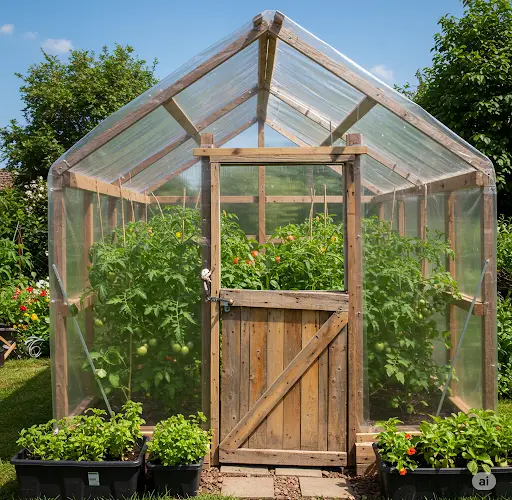Creating a greenhouse that practically runs itself might sound like a dream, but with the right setup, it’s entirely possible. I designed and built a DIY greenhouse that not only supports year-round gardening but also minimizes the need for daily intervention. It maintains consistent temperatures, waters plants automatically, and even uses renewable energy to power essential systems. Here’s how I made it happen and how you can too.
Planning the Structure
The first step was designing a structure that would be durable, efficient, and affordable. I used a basic hoop house model with PVC pipes and UV-resistant polyethylene sheeting. This type of design is lightweight, easy to assemble, and highly customizable.
The greenhouse measures about 10 by 20 feet—big enough to grow a variety of vegetables and herbs but small enough to maintain easily. The frame is anchored into the ground with rebar and concrete to withstand strong winds. I included a double-layer plastic covering to provide insulation, helping to keep temperatures stable even in colder months.
Natural Heating and Cooling
Temperature regulation is one of the most important factors in keeping a greenhouse functional year-round. To reduce reliance on electrical heating or cooling, I incorporated passive solar principles.
The greenhouse is oriented east to west so it receives maximum sunlight throughout the day. Inside, I placed large black barrels filled with water along the north side. These act as thermal masses, absorbing heat during the day and releasing it slowly at night to prevent freezing temperatures.
For ventilation, I installed automatic vent openers powered by wax pistons. As the temperature inside rises, the wax expands and opens the vents, allowing hot air to escape. When it cools down, the vents close on their own. This simple system requires no electricity and helps maintain a balanced internal climate.
Automated Watering System
Watering plants manually every day can be time-consuming and inconsistent. To solve this, I set up a drip irrigation system connected to a 55-gallon rainwater barrel outside the greenhouse.
The system uses gravity to deliver water through tubes directly to the plant roots. I added a simple float valve to control the water level in the barrel, and during dry periods, I can easily refill it from a hose or additional rainwater collection tanks. A timer regulates watering intervals, which means the plants get the right amount of water consistently without waste.
Renewable Power Supply
To power a few electrical components—such as a small exhaust fan for extreme summer heat and a grow light for the shorter days of winter—I installed a small solar panel kit.
The panel charges a deep-cycle battery during the day, which then supplies power to these systems as needed. Everything is on a timer or thermostat to reduce energy consumption. It’s a low-cost setup that fits well with the greenhouse’s self-sustaining goals.
Soil and Planting Strategies
Inside the greenhouse, I use raised beds filled with a rich mixture of compost, peat moss, and vermiculite. This combination ensures good drainage and nutrient retention.
Crop rotation and companion planting are key practices I follow to keep the soil healthy and deter pests naturally. For example, basil and marigolds planted near tomatoes help repel insects. I also use vertical gardening techniques for vining plants like cucumbers and beans to maximize space.
Year-Round Harvests
Thanks to the greenhouse’s self-sustaining systems, I can grow food throughout the year—even in the dead of winter. Cold-hardy vegetables like kale, spinach, and carrots thrive during the cooler months, while tomatoes, peppers, and cucumbers take center stage in summer.
The greenhouse creates a stable microclimate that extends growing seasons and protects crops from extreme weather. The result is a steady supply of fresh, organic produce with minimal daily effort.
Final Thoughts
Building a DIY greenhouse that takes care of itself is not only satisfying but also a smart step toward sustainable living. With an upfront investment of time and planning, it’s possible to create a low-maintenance growing space that reduces water usage, lowers energy costs, and produces healthy food year-round.
Whether you have a large backyard or a modest plot of land, adapting these principles can help you build your own self-sufficient greenhouse. Start small, customize as you learn, and enjoy the rewards of homegrown food with less work.



